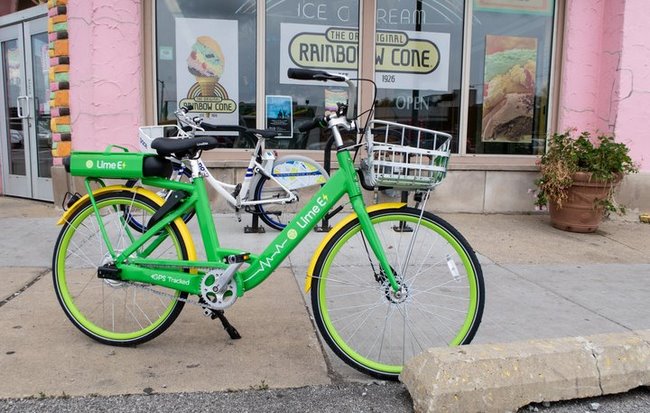Did You Know?
Active Trans joins Chicago’s New Mobility Task Force

UPDATE (3/14/19): Chicago released a report featuring recommendations from the New Transportation and Mobility Task Force, including many ideas Active Trans pushed in task force discussions.
—
As executive director of the Active Transportation Alliance, I am excited to join Chicago’s New Transportation and Mobility Task Force, which meets for the first time Oct. 25.
Cities are poised to become more livable and equitable by making it easier and cheaper to get around with fewer cars on our streets, and new mobility options have the potential to accelerate this change.
In my view, the main objective for the task force is identifying the right mix of policies and incentives to achieve this goal.
In Chicago, the share of trips by car has decreased slightly since the year 2000, replaced by mainline transit, walking and riding bikes. What’s different today is the emergence of “new mobility” options like subscription shared ride services, micro-transit and more efficient single-person modes such as bike share, electric scooters and even mini-cars.
Companies like Uber, Lyft, Lime, Via and others are chomping at the bit to provide these “high-efficiency” transportation services, and Chicago can unleash their potential by adopting policies that prioritize these modes over inefficient single occupancy cars. For example, setting aside lanes for buses and other high-efficiency vehicles would harness traditional “alternative” transportation as well as new mobility options.
This is good news for cities because relying on distracted drivers to transport themselves in 3,000-pound cars that are 80 percent empty and parked 95 percent of the time is inefficient, unsustainable and unjust towards people who cannot afford a car or physically drive one.
It’s also extremely expensive and unsafe, requiring massive government subsidies to build, maintain and police seas of flood-inducing roads and parking, across which more than 100 people die and thousands more are injured daily in the U.S. Moreover, research shows that building more roads and parking doesn’t provide lasting congestion relief, and, in fact, exacerbates our dependence on cars.
The goal isn’t to completely eliminate car trips, but many can be gradually replaced with traditional alternatives as well as new mobility options.
At the same time, relying on for-profit companies with venture capital investors to serve the public interest is a risky proposition absent good policy to direct these resources and their interplay with publicly-run systems like Divvy, CTA and Chicago’s thousands of miles of streets and sidewalks. The lack of good upfront policy has already contributed to more driving and congestion in Chicago due to Uber and Lyft, and electric scooters and dockless bikes have gummed up sidewalks in other cities.
We haven’t mentioned autonomous and connected vehicles (ACVs) yet, which is probably what the average person thinks of when they hear the words “new mobility.” We have no doubt ACVs will emerge over time and are optimistic about safety benefits, but this is further down road. However, companies are pouring billions of dollars into this movement now and pushing policy changes today.
The New Mobility Task Force should embrace ACV policies that lead to a shared use subscription deployment of ACVs, rather than the current model of people traveling alone in cars they own. This is because ACVs may be too expensive for most people to own, and imagine how many more cars will hit the roads and overwhelm parking if everyone owns cars that can be used for sleeping or reading a book!
Stay tuned for reports from the task force meetings, as well as our recommendations.
Make a Donation
Your tax-deductible donation supports the important work that Active Trans does throughout the region
